#ahoexploringinteractions2022
Explore tagged Tumblr posts
Text
Play and Discuss: Genshin Impact
Today, we had 2 minutes to present a game we played during the 2 day long gaming festival. Here on the Tumblr, I’ve taken the liberty to break that 2 min limit in order to go more in-depth however.
I and Malin @designingaction chose Genshin Impact, since providing the accounts of both a new and veteran player would give a nuanced perspective. The game is free-to-play and is available on Windows, iOS/Android and PS4/PS5, but like many other video games, it’s unfortunately not on Mac.
youtube
Trailer from when the game was first announced. Voiceovers in Mandarin Chinese.
Find a couple of images that are the most representative of your play experience
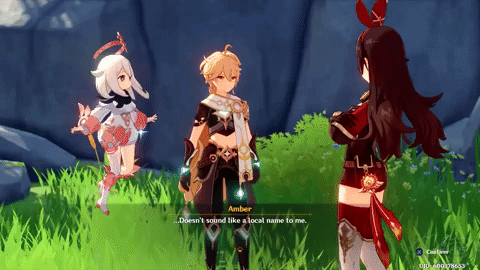
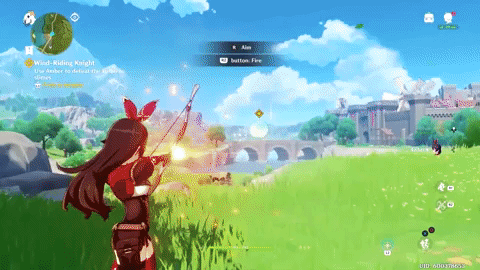
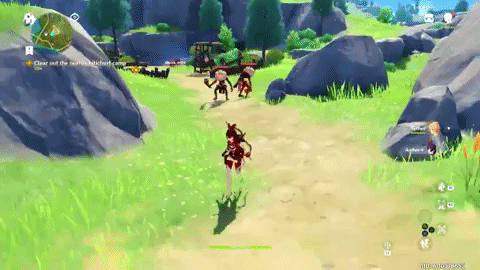
Explain the game in one or two sentences
Genshin Impact is an action RPG set in an «open-world environment with an action-based battle system using elemental magic and character-switching.» The protagonist travel the world to reunite with their lost sibling, getting involved with the various affairs of Teyvat’s many distinct nations. The game is free-to-play where the player can obtain characters and weapons through a gacha* system, either through microtransactions or for free by completing in-game activities such as events, quests, minigames and overall exploration of the open-world. New content such as characters, weapons, regions, and events is added every two weeks. It’s primarily a single-player experience, but co-op unlocks around LV16 and is useful for dealing with tough monsters if your party/team of characters is on the weaker side.
Gachapon is Japanese for a capsule toy vending machine, where you spend money to receive a random reward. It can be compared to collecting Pokemon cards, where you want to get the golden card, but you cannot know what cards you’ve gotten until you’ve purchased and opened the package. In laconic terms, it’s a style of lottery machine where you receive collectibles. Here’s a demo of how gachapon works on tiktok.
Include how the games feels like and if something was inspiring to you
After a couple of minutes spent setting up an account, the game gets straight to the point explaining the protagonist’s overall motivation in the narrative, and goes through the game’s controls with an interactive tutorial sequence. For beginners, all these buttons may feel a bit overwhelming, but like any other video game, it’s something you get used to after a while as it becomes a part of the player’s muscle memory, and can be compared to driving a car. The opening arc’s fast pace of introducing new game mechanics is something I appreciate in retrospect, as it wastes no time letting the player begin playing around in a satisfying manner and in a generous safe beginner environment without making the game experience unplayable.
As a veteran player, I’m unable to fully be aware of the game’s unique details unless I explicitly compare it to another game. Instead, it’d be more insightful to have a look at my teammate’s first impression, since she has a fresher set of eyes/senses as a beginner. I think she had not heard of the game before this assignment, which makes sense as the game is does not have as much popularity in Europe as in America or China.
My stepdad likes to laconically describe the game as a «poorman’s Zelda» which is not a terrible description: Like Zelda, Genshin follows the style trend of Ghibli-inspired aesthetic, and borrows many open-world game mechanics from Breath of the Wild. Although MiHoYo also openly borrows from other Japanese titles like Final Fantasy, Bayonetta, Nier Automata etc. For their cutscenes, MiHoYo uses many various sakuga* techniques; For instance, the opening cutscene uses the itano circus and impact frames (Canipa Effect 2020). In short, Genshin is quite a loving homage to the anime subculture from Chinese developers and donghua animators, as evident in the company’s motto: «Tech otakus* save the world.» To put it in the words of Picasso: «Good artists borrow, great artists steal.» Here’s a gif from Zelda BOTW for comparison:
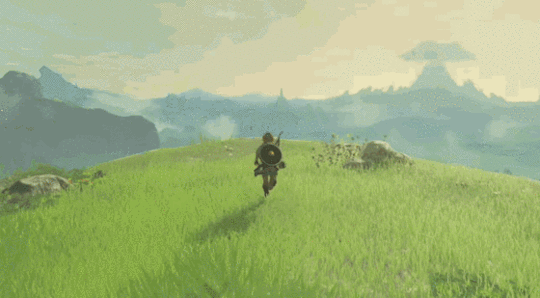
Personally, I find Genshin more enjoyable than Zelda, since the problem with BOTW was that at some point I run out of things to explore, and the open world ends up feeling empty. Although, there’s a discussion around whether or not games should have a definitive ending from an addiciton standpoint, I support the subscription model where you do not run out of content. For me, it’s a matter of the same convenience that Netflix provides, which places the power of choice and self-control in the user’s hand. This allows me as a player control whether I want to continue or not, instead of forcing me to stop. And if I do wish to stop, I can instead just watch a rundown of the cutscenes on Youtube, watch someone else play through the game as a backseat gamer, or simply break pattern and leave the game.
In the game’s settings you can also switch between many different languages, though I would of course recommend playing the game with English dub because Zhongli’s English voice actor sounds amazing, although there are some Chinese expressions or rhymes which does not translate as well such as Hutao’s hilichurl song.
The game is understandably pretty large in terms of MB, partly due to how big the still expanding open world is, but give it a shot if you can 🌸.
Sakuga is an animation sequence in an anime that is of noticeably or drastically higher quality, usually for dramatic effect. This phenomena is common for productions on a tight budget such as animated tv series, which neither has the time nor money to produce cinema-quality animation for twenty episodes straight. I prefer discovering sakuga by watching compilation montages on social media, such as this one on special effects on Youtube, although professional animators would use SakugaBooru, which is a collaborative wiki used to identify and credit the individual artists/animators involved in a production.
Otaku is Japanese for geek or nerd, and is what anime enthusiasts may call themselves. Alternatively, foreigners may also use the word weeb or weeaboo to depreciatively refer to themselves as a member of the anime community/subculture. In the west, it can be defined as a term for foreigners who’s enthusiastic about Japanese pop culture.
Finish with one way of changing, improving or creating a variation of that game
Overall, I think the game is a lot of fun and great in many aspects, so it was difficult to find something we could improve or change about the game. We agreed that we could make the game more ethical, by removing the several different intermediary currencies in the optional payment transaction, which creates a cognitive distance and thus makes it harder to clearly see how much worth you’ve got for the money you’ve spent. At the moment the game has three different intermediary steps before you can gacha pull for a character or weapon: Genesis Crystal → Primogems → Wishes.
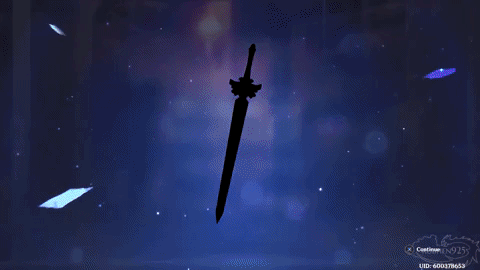
If we wanted to create a variation of the game, we could adjust the elemental resonances either by chaning the effects or adding other elements. We could also switch up what kind of weapons the characters uses, or remove how each character is limited to one weapon-type, allowing the player to keep using their favourite character just with for instance a sword instead of a bow. This would also create a larger pool of possible combinations and make the game even more customizable, which adds to a robust game design. The downside is that this would increase the costs since each character needs a different set of animations with each weapon type, which could lead to the animations being less appealing, and detract from the characterization of each character.
#brief 6#ahoexploringinteractions2022#ahoexploringinteractions#case study#review#game design#genshin impact#gacha#sakuga#mihoyo#result#presentation
46 notes
·
View notes
Text
Brief 4: Animasjon
Prosess!
Testing av stop motion
En nysgjerrig klementin som utforsker rommet.
Leveranse
Lag en stop motion film hvor du gir en «død» gjenstand liv
Oppgaven skal løses individuelt
Bruk minst 3 animasjonsprinsipper
Legg til lyd som forsterker opplevelsen
Max 20-30 sekunder (.mp4 format)
Lastes opp fredag før kl 09:00
11 notes
·
View notes
Text
How do you use your phone in a plant shop?
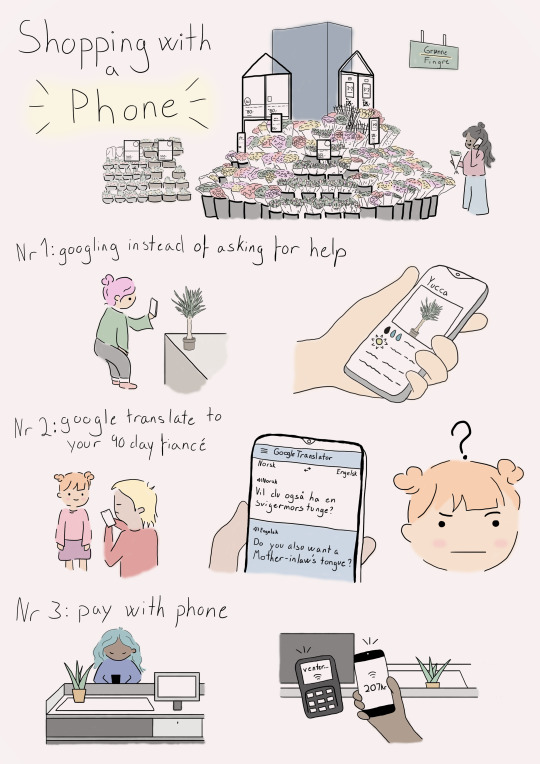
8 notes
·
View notes
Text

Brief 3 - Tegneserie
En tegneserie om en sau som prøver å være som alle andre på sosiale medier og kortvarig glede :( Håper jeg får tid til å fargelegge den snart også:):)
9 notes
·
View notes
Video
tumblr
2 notes
·
View notes
Video
Teksten er skrevet i fellesskap innad i gruppen.
I dette prosjektet har vi laget in interaktiv læringsopplevelse for ungdomsskoleelever som knytter seg til den nye I/O utstillingen på Teknisk Museum. Gjennom kunnskap og erfaringer fra semesterets tidligere prosjekter har vi utviklet et konsept der elevene skal få oppleve hvordan det var å eie og bruke klapptelefonen Motorola RAZR V3. Hovedfokuset har ligget på å gjenskape en autentisk brukeropplevelse for elvene, slik at de kan interagere med, og forstå, teknologi og design fra tiden før iPhonen revolusjonerte mobiltelefonsegmentet. Mange i denne målgruppen har sannsynligvis ikke noe forhold til mobiltelefonen uten touch-skjerm, ansiktsgjenkjenning og grenseløse muligheter. Denne simulatoren tilfører noe museets døde gjenstander ikke kan og tar brukeren med på en reise gjennom klassiske mobilspill, teksting med 9 knapper, valg av ringetoner, konkuranser og praktiske oppgaver som skal løses. For enkelte kan denne simulatoren tilføre nostalgi, gi et inntrykk av mobilkulturen pre iPhone-dynastiet, skape en hverdagsskildring fra det nye århundrets spede begynnelse og kanskje viktigst av alt; skape interesse og forberede elevene på et forrykende museumsbesøk.
5 notes
·
View notes
Video
tumblr
Brief 4 Stop-motion
0 notes
Text
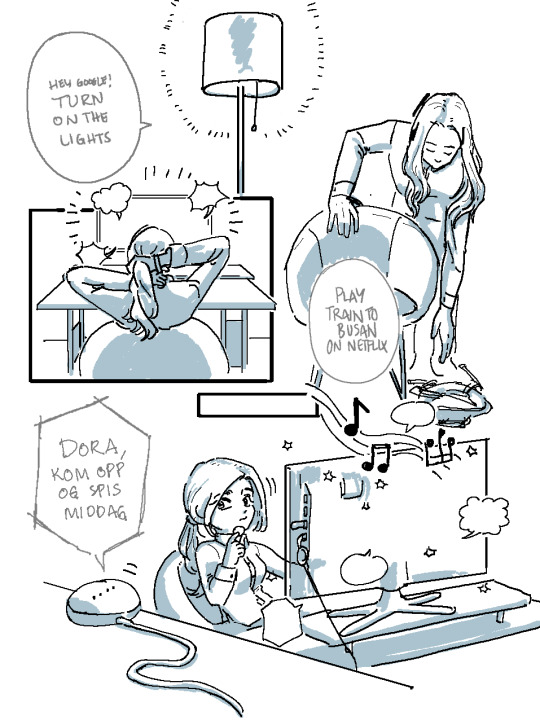

Comic strip about how the internet has become a natural part of daily routine from a fly on the wall perspective.
38 notes
·
View notes
Text
Brief 4: resultat!✨
8 notes
·
View notes
Text
@designida @barenoegreier
Brief 9: Prosess (uke 4)
Denne uken forberedte vi presentasjon til teknisk museum. Vi lagde en video for presentasjonen for å demonstrere brukeropplevelsen hvor vi kombinerte Figma, simulatorene våre, lydeffekter og videoer.
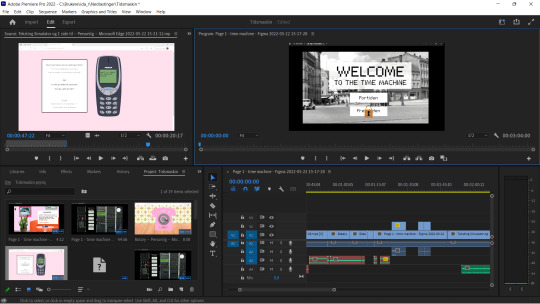
Etter presentasjonen på Teknisk Museum la vi til et fremtidsrom for å illustrer hvordan vi tenkte at denne delen kunne låse seg opp etter at elevene har vært på Teknisk museum. Dette rommet er ment å skape diskusjon rundt det de har lært på museet og ved å bruke nettsiden.
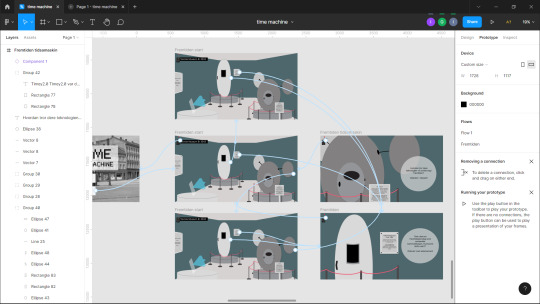
Vi la også til noen ekstra detaljer på noen av rommen våre, for å få de til å oppleves enda mer fulle av ting man kan finne.
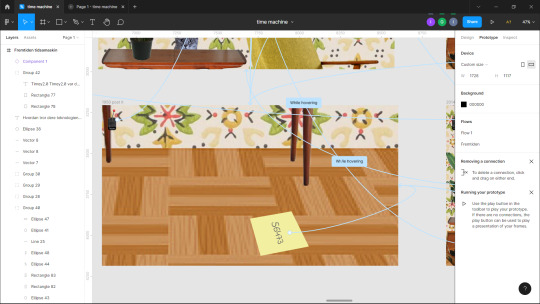
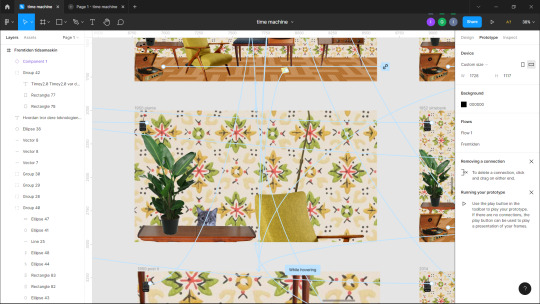
Vi la også til en warp effekt, for å få følelsen av å reise med tidsmaskinen. Vi lagde til slutt en ny video med de nye sidene.
3 notes
·
View notes
Text
FishBud


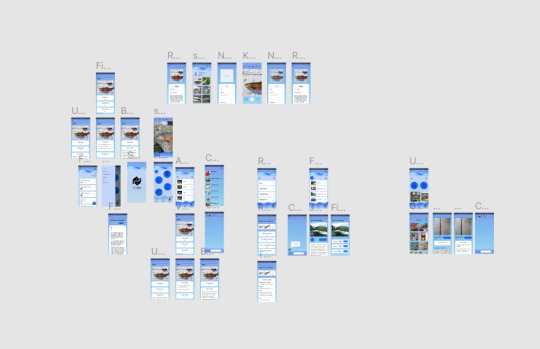
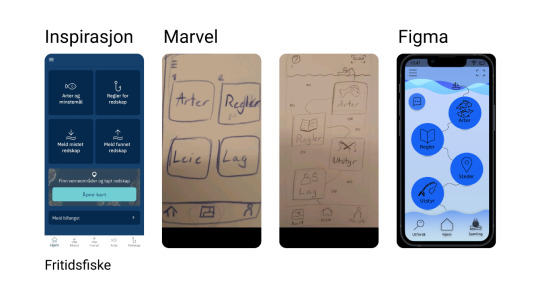
Some process and the demo of the FishBud app. An app for aspiring fishers. By exploring the app you'll get information, tools and list over fishing places. The app is a beginner friendly start to exploring a new hobby.
5 notes
·
View notes
Text
Brief 6 - result - final brukertest
Spillet vårt valgte vi å kalle murder mystery. Målet med spillet var å reise tilbake i tid og finne ut av hvem som hadde drept prinsen. Om du ikke klarte å løse mysteriet ville hele din slekt, inkludert deg selv, dø. Vi gjemte rekvisitter og gåter rundt i gaten. Gåtene ledet til neste rekvisitt og alle rekvisittene var et hint om hvem morderen var. Når man tilslutt hadde funnet alle 4 rekvisittene, kunne man finne ut av hvem morderen var.
I tillegg til gåtene brukte vi musikk som veiledning når spillerene brukte lang tid på å lete etter rekvisittene. Slik holdt vi fortgang i spillet, så spillerene hadde fremgang og motivasjon gjennom hele spillet.
Musikken, området og rekvisittene var alle bevisst valgt for å skape en stemning rundt spillet.
3 notes
·
View notes
Text
BRIEF 9 - Prosess
m/ @designermaria-blog og @odaskuggevik
Vi startet med valget av telefon som tema og ønsket å lage et spill for å engasjere elevene. Vi var innom flere ideer, men ønsket fokus på den teknologiske utviklingen av telefonen og den rollen dette har spilt i en samfunnskontekst. Etterhvert falt vi ned på at vil ønsket å gjøre noe med utgangspunkt i sentralbordet og trekke noen paralleller til dagens bruk av telefon.
Vi begynte å drodle litt rundt hvordan vi kunne undersøke dette og falt vi ganske fort inn på personvern og hvordan dette har endret seg . Vi begynte selv å reflektere ved å trekke paralleller mellom noe som virker veldig inngripende (at de som arbeidet ved telefonsentralen kunne overhøre private samtaler) og noe vi i vår tid synes er ganske greit (at informasjonskapsler innhenter og lagrer informasjon om alle våre bevegelser og atferd på nett).
Med dette som utgangspunkt fant vi ut at vi ville lage et spill som kunne få elevene til å reflekter over det samme. Målet var også å sette fokus på forskjellene på hvilken informasjon og mengden data du la igjen i 1922 vs. 2022.
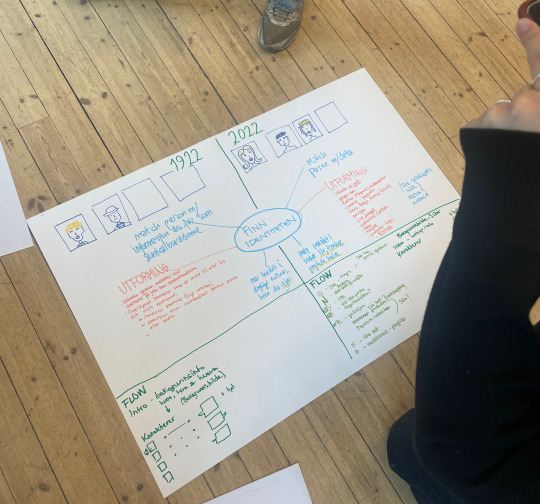
Vi ønsket å lage et spill som oppleves som morsomt og engasjerende og som setter elevene inn i problemstillingen på en morsom måte. Med dette som utgangspunkt utarbeidet vi spillet telefondetektivene.
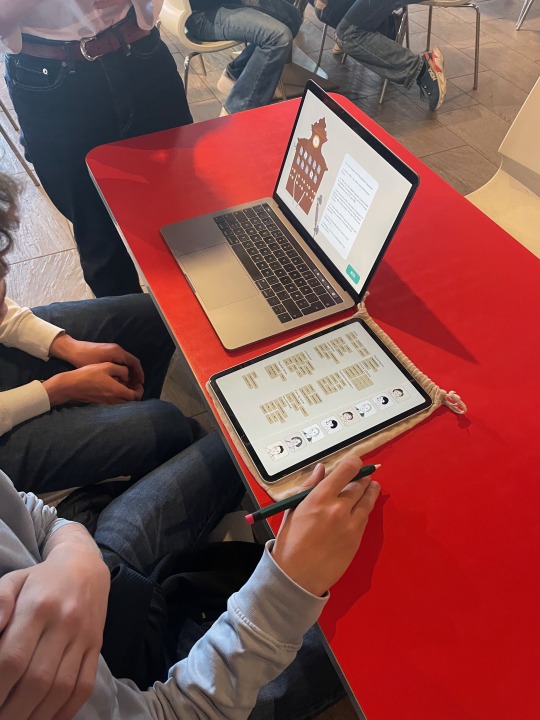
Vi brukertestet spillet vårt på to grupper fra 8.trinn - både jenter og gutter - noen av innspillene vi fikk som var nyttige for videreutvikling av spillet var: *Endre tema i samtalene så de blir mer engasjerende - gjerne litt juicy. *Gjøre ting som er viktig å få med seg tydeligere * Observerte hvordan de brukte prototypen - endret tydelighet og oppsett litt
De likte konseptet der de fikk snoke litt i telefonbruk veldig godt, likte at det var et spill og at det var mange ting å velge mellom. De virket engasjerte i å komme til bunns i hvem det var og hvordan de kunne bruke informasjonen de fikk til å konkludere. Vi lærte også at vi i utgangspunktet hadde overvurdert dem litt i hvor lett de skulle konkludere med ting som ikke ble presentert svart på hvitt.
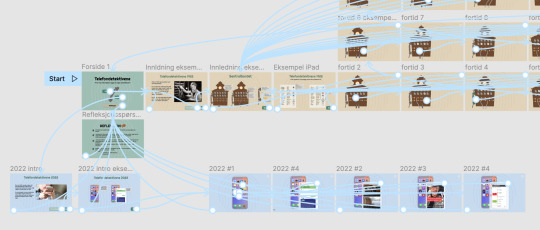
2 notes
·
View notes
Link
Brief 6: resultat!
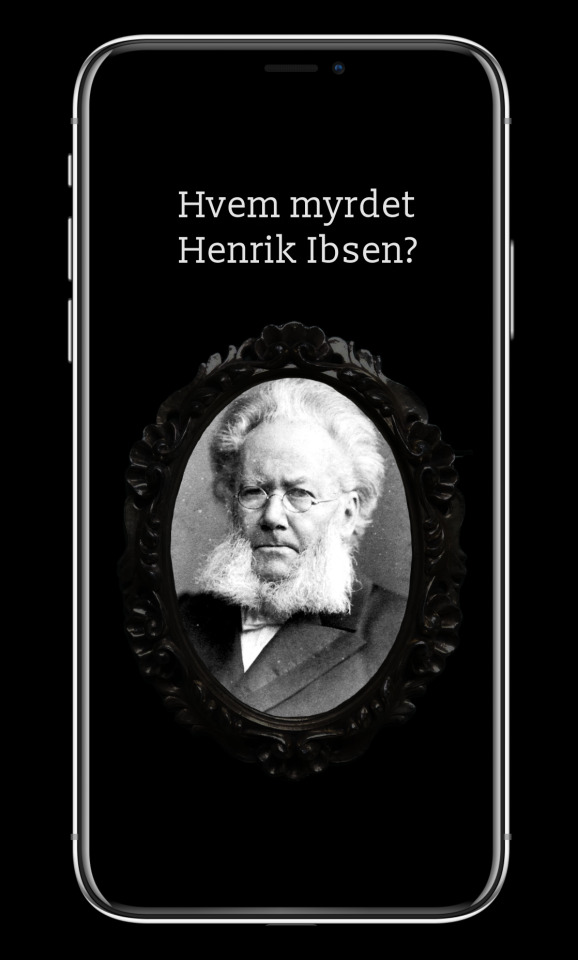
Keep reading
3 notes
·
View notes
Text
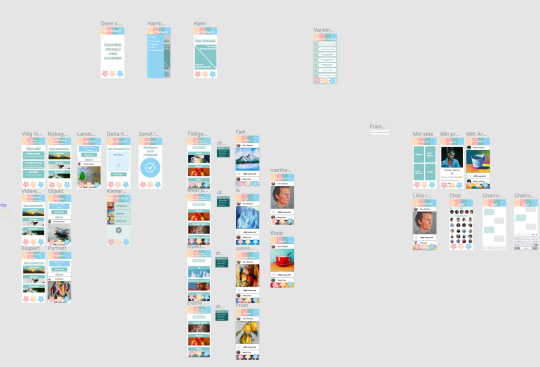

Prototyping i Figma
3 notes
·
View notes
Text
"DET STORE AHO SPILLET"

Group: @hannatyranna @designingaction @barenoegreier
RULES/RESULTS
Congratulations! You have been accepted into AHO, now you just have to survive all the 10 semesters!
THE BOARD: On the board is a map over the school, it consists of five rooms the workshop, classroom, pub, rooftop, canteen and library. All players start at the entrance (start). To the right of the map is the semester ladder, this is where the players progress through their studies.
THE PIECES: Each players picks one token that they will move around the board and an another token that moves up and down the semester ladder, in matching colour.
SOCIAL POINTS: The social points are the red squares, every player starts the game without any points.
ACADEMIC POINTS: When the player receives or loses an academic point they move their circle token in their colour up or down the semester ladder.
OBJECT CARDS: Cards that have words/things/actions that the player will mime, draw etc.
DRAWING CARDS: Cards to draw on when instructed to.
DICE: Roll the dice to dice to move your token and roll the dice to pick a card, challenge (4-6) or scenario (1-3).
GAMEPLAY:
1. To decide what player that starts, roll the dice. The one with the highest numbers starts.
2. Roll the dice to move your token, roll again to pick a challenge (4-6) or scenario (1-3) card.
3. Follow the instruction on the card and either move your token on the semester ladder further, backwards or stay depending on the card.
Good luck!
PROCESS
- First we started talking about why type of game we wanted, by following the instructions on the form.
- We then started looking for a theme and figured we wanted a fun game basef on the school.
- We printed a photo of the floor plan to the school and used this as a board. We figured the players would more around the board, but the points would be counted on a different scale on the board.
- We wanted to incorporate “character” cards that the players would get at the beginning of the game, and then draw three qualities, these would help to counter the scenario cards. This proves to be quit challenging and did not make it to the final stage of the play through.
- We wanted the game to make the players interact with each other so we made challenges cards that would be activities such as mime, drawing etc. We also felt that we needed something that would keep the pace of the game. The scenario cards would work in the way that things happened to the players based on pure luck, you would either get a point of lose one depending on the card.
- At first the challenges and scenario cards were not place specific, but we wanted to tie the cards the “room” or “place” you were in on the board.
- The most challenging part of making the game was getting the points system to work. At first we had social and academic points, and you needed a certain amount of each to move a semester on the scale. This proves to be very challenging, and made the pace of the game quit slow. We then tried to change the points on the card, maybe the ratio of good and bad cards were to many bad?
- We also questioned the social and academic points, should they worth the same? Would they both be physical object that you would receive? We ended up removing academic points as physical object and rather have them presented as the moving of your piece on the semester scale. The social points would be received while playing and could be traded in for academic points.



3 notes
·
View notes